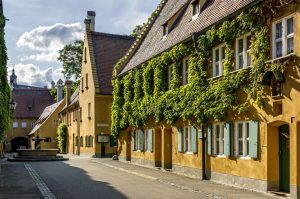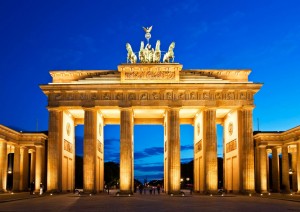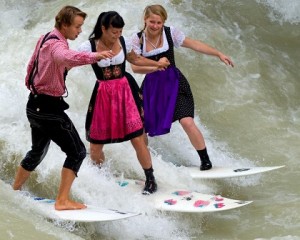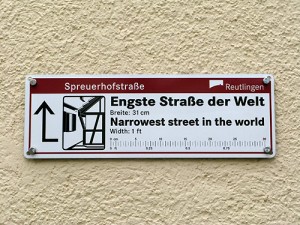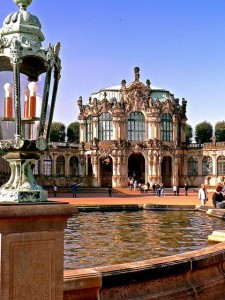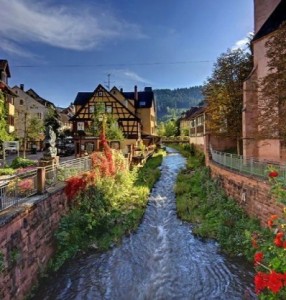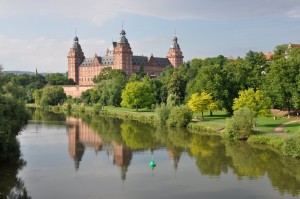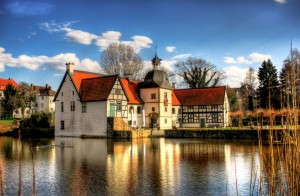The Island of Reichenau is located in southern Germany. It lies almost due west of the city of Konstanz, between the Gnadensee and the Untersee, two parts of Lake Constance. With a total land surface of 4.3 sq. km and a circumference of 11 km, the island is 4.5 km long and 1.5 km wide at its greatest extent. The highest point, the Hochwart, stands … [Read more...]
Fuggerei
The Fuggerei is the world's oldest social housing complex still in use. It is a walled enclave within the city of Augsburg, Bavaria. It takes its name from the Fugger family and was founded in 1516 by Jakob Fugger the Younger (known as "Jakob Fugger the Rich") as a place where the needy citizens of Augsburg could be housed. By 1523, 52 houses … [Read more...]
Interesting Facts About the Brandenburg Gate
Brandenburg gate is one of the most iconic scenes of recent German history. Hundreds of thousands of people celebrated in front of the Brandenburg Gate as the Berlin Wall fell on November 9th, 1989. The Gate has now come to represent German unity and freedom since the end of the Cold War and divided country. Here are a few facts that … [Read more...]
Esslingen am Neckar
Esslingen am Neckar is a city in the Stuttgart Region of Baden-Württemberg in southern Germany, seat of the District of Esslingen as well as the largest city in the district. It is located on the Neckar River, about 14 km southeast of Stuttgart city center. The regions surrounding the city of Esslingen are also mostly … [Read more...]
What is so remarkable in English Garden in Munich?
The English Garden (Englischer Garten) stretches all the way from Munich's city center to the northeastern city limits. It was created in 1789 by the British physicist Sir Benjamin Thompson. Sir Benjamin was primarily a physicist but also worked as a government administrator. He spent 11 years in Munich organizing the Bavarian army. This garden … [Read more...]
Spreuerhofstrasse – World’s Narrowest Street
New York has Broadway. Paris, the Champs- Elysées. And Reutlingen? The provincial town in south-western Germany has Spreuerhofstrasse. Spreuerhofstrasse in the south-western town of Reutlingen is just 3.80 meters long and listed as the narrowest alley in the world in the Guinness Book of World Records, with a width of just 31 centimetres (12.2 … [Read more...]
Zwinger
The Zwinger is a palace in the eastern German city of Dresden, built in Rococo style and designed by court architect Matthäus Daniel Pöppelmann. It served as the orangery, exhibition gallery and festival arena of the Dresden Court. The location was formerly part of the Dresden fortress of which the outer wall is conserved. The name derives … [Read more...]
Schramberg
Schramberg is a town in the district of Rottweil, in Baden-Württemberg, Germany. It is situated in the eastern Black Forest, 25 km northwest of Rottweil. With all of its districts (Talstadt, Sulgen, Waldmössingen, Heiligenbronn, Schönbronn and Tennenbronn (since 2006)), it has about 22,000 inhabitants. One of the streams flowing … [Read more...]
Aschaffenburg
Aschaffenburg is a city in northwest Bavaria, Germany. The town of Aschaffenburg is not considered part of the district of Aschaffenburg, but is the administrative seat. Aschaffenburg belonged to the Archbishopric of Mainz for more than 800 years. The city is located at the westernmost border of Lower Franconia and separated from the central … [Read more...]
Dortmund
Dortmund is an independent city in North Rhine-Westphalia, Germany. It is in the middle part of the state and is considered to be the administrative, commercial and cultural center of the eastern Ruhr area. Its population of 581,612 (2015) makes it the 8th largest city in Germany. Moreover, Dortmund is the largest city by area and population … [Read more...]
- « Previous Page
- 1
- …
- 4
- 5
- 6
- 7
- 8
- 9
- Next Page »

